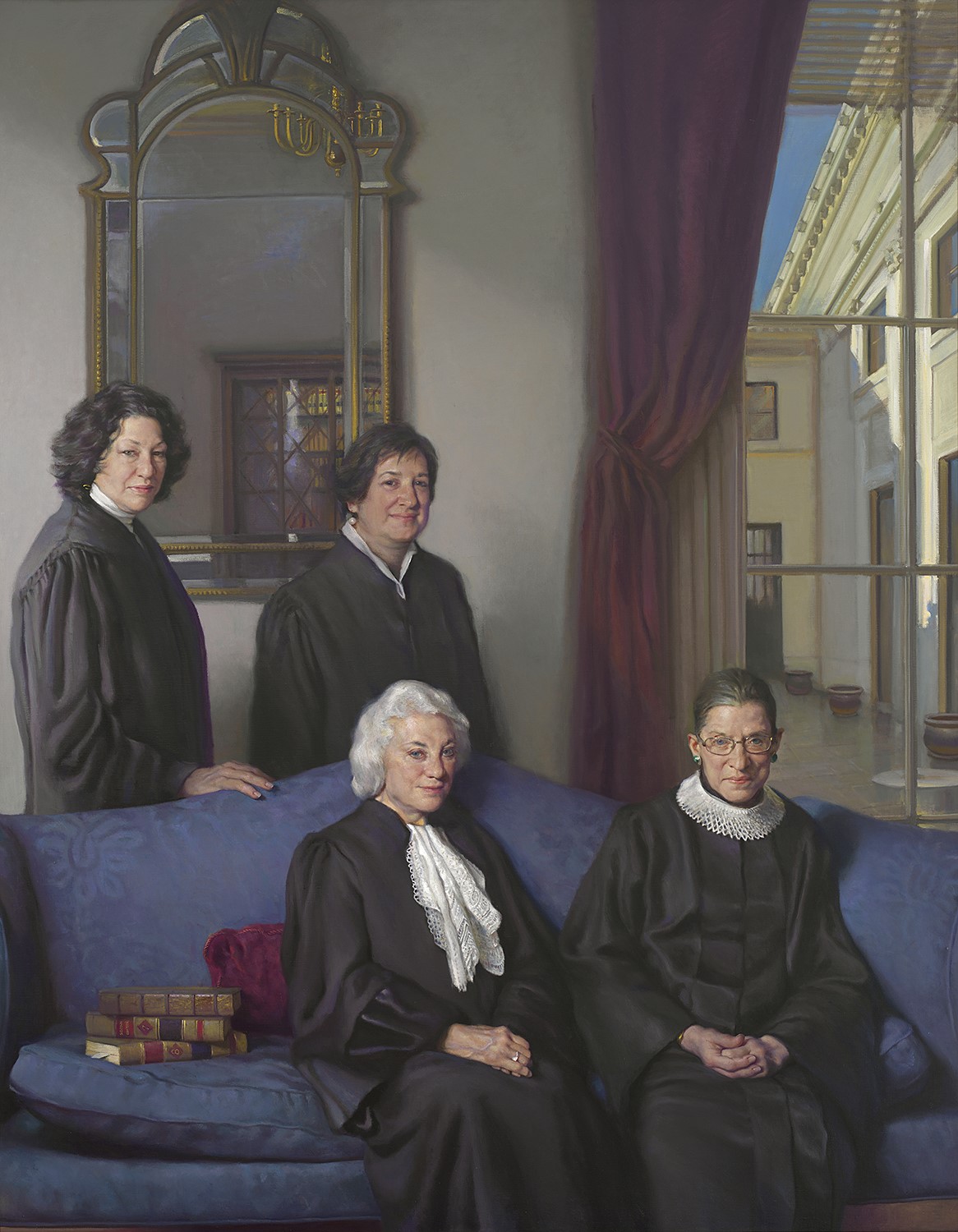The Four Justices

About the Portrait
A major step in women’s struggle for equality came on March 3, 1879, when Belva Lockwood became the first woman to argue before the Supreme Court. In the 1940s, distinguished jurist Florence Allen was considered for the Court, but opposition, including from the sitting justices, precluded her nomination.
In 1981 Sandra Day O’Connor (born 1930) became the first woman to serve on the Court. O’Connor, a graduate of Stanford Law School, was serving on the Arizona Court of Appeals when President Ronald Reagan nominated her as an associate justice. O’Connor retired from the Court in 2006.
Ruth Bader Ginsburg (born 1933) graduated from Columbia Law School. She was serving on the U.S. Court of Appeals for the District of Columbia when President Bill Clinton nominated her as an associate justice of the Supreme Court in 1993.
Sonia Sotomayor (born 1954) received her J.D. from Yale Law School. She was serving on the United States Court of Appeals, Second Circuit, when President Barack Obama nominated her as an associate justice in 2009. She became the first Latinx Supreme Court Justice.
Elena Kagan (born 1960) graduated from Harvard Law School. She was President Obama’s solicitor general when he nominated her as an associate justice of the Supreme Court in 2010. Nelson Shanks was commissioned to create this por¬trait to recognize the accomplishments of all four justices. He has drawn on the traditions of Dutch group portraiture for his composition, and the setting is based on interiors and a courtyard within the Supreme Court Building in Washington.
Since this portrait was completed, Amy Coney Barrett became the fifth woman to serve on the Supreme Court. She was nominated by President Donald Trump in October 2020.
Portrait Analysis:
Discuss and analyze the portrait using the following questions as a guide:
1. Looking Questions:
- Describe what each sitter is wearing. How are their outfits similar and how are they different?
- Describe the setting of this portrait. What do you see in the room? What do you see outside the window?
- What objects do you see in the portrait? What is on the couch next to the seated women?
- Describe the sitters’ poses. Are they standing? Sitting? How much of their bodies can you see? Where are their hands positioned?
- Describe the sitters’ facial expressions. In what direction are they looking?
2. Analysis Questions:
- What can you tell about the sitters’ occupation based on their clothing?
- What can you determine about the setting of the portrait? Where might this be? Why might the artist have chosen this setting?
- Why might the artist have chosen to include these objects in this portrait? How do they relate to the sitters?
- Do all of the sitters look like they are close to each other in age? Do some of the women look older than others? If so, which?
- Why might the artist have arranged the women in this particular pose, with some women sitting and some standing? What can we determine about the relationship between these women based on their pose?
Suggested Activities: Lesson Plans and Interviews with the Justices
For more educational resources on The Four Justices, including grade-specific lesson plans aligned with Common Core standards and interviews with the four justices, visit the portrait’s website: http://www.npg.si.edu/exhibit/fourjustices/index.html. Unless otherwise noted, all images are from the National Portrait Gallery, Smithsonian Institution.